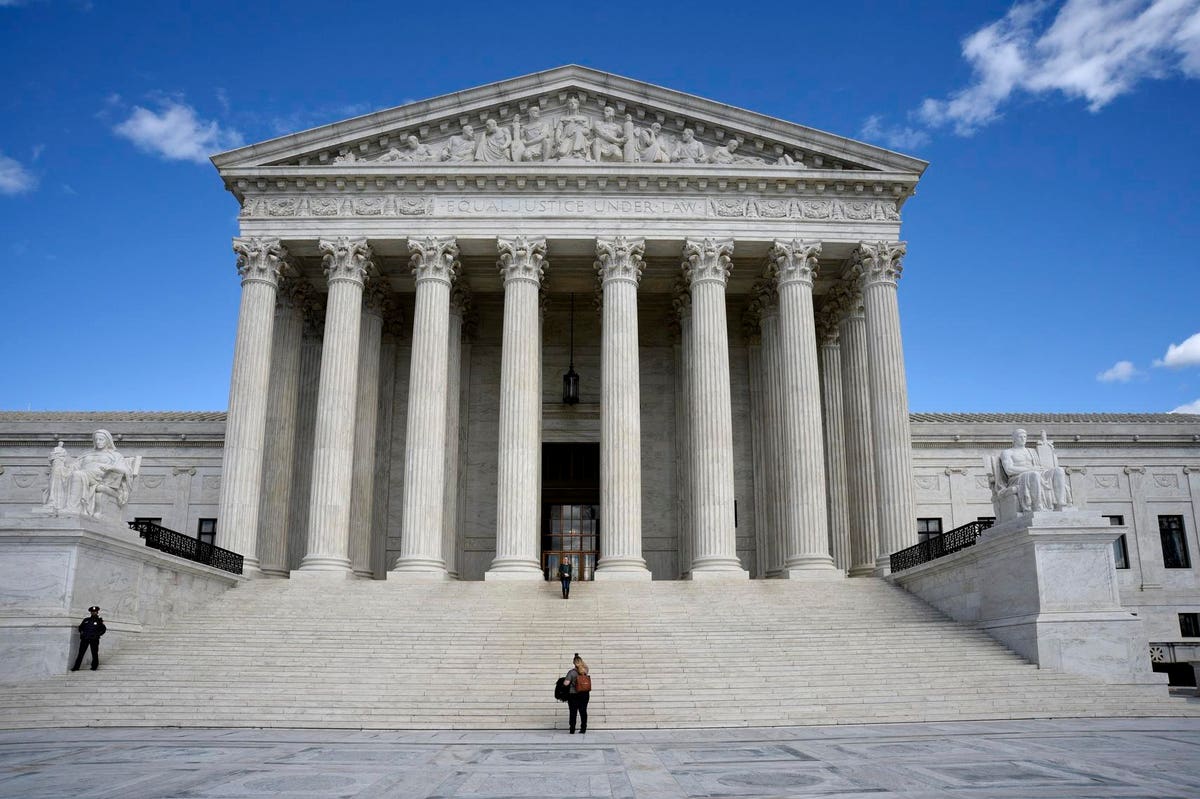When the Biden administration announced the federal government would forgive $10,000 in federal student loan debt per eligible borrower (and $20,000 in federal loans for Pell grant recipients) in August of last year, plenty of us were skeptical from day one. After all, many legal scholars and political experts agree the President doesn’t have the power to pass loan forgiveness without the full backing of Congress. There were also going to be legal challenges to such a forgiveness plan, which would reportedly cost as much as $400 billion (give or take), according to the Congressional Budget Office.
Not surprisingly, there were several serious legal challenges to Biden’s student loan forgiveness plan that have managed to tie it up from August 2022 until now. These legal challenges worked their way through various levels of the court system until making it all the way to the Supreme Court of the United States (SCOTUS).
The Supreme Court heard a range of arguments about the legality of student loan forgiveness in February of this year and released its official opinion at the end of June. And, what’s exactly what I’m here to talk about today.
Ultimately, the Supreme Court’s decision puts an end to all our questions and worries about whether student loan forgiveness will happen or not. As of June 30 2023, the promise of $10,000 to $20,000 in student loan forgiveness promised per eligible borrower is dead. Like it or not, but blanket loan forgiveness is not going to happen — at least not in the way it was promised and definitely not right now.
Federal Student Loan Payments Resume In October
So, what will happen now? For the most part, student loan repayment is getting back on track to where it was before the Covid-19 pandemic changed up the landscape.
With student loan debt forgiveness off the table, the majority of borrowers with federal student loans need to begin making plans to pick up with payments where they left off.
This was codified earlier this month when Congress passed a law requiring student loan payments to restart regardless of the Supreme Court decision.
This means federal student loans will start seeing interest accrue in September, and the first payments will be due in October.
To find out when you’ll need to make your first payment and what your monthly payment will be, you should log into your federal student loan account at StudentAid.gov or using your loan servicer’s website if you still have that information handy.
As you prepare to resume payments, the Department of Education recommends logging into your loan servicer’s website or your StudentAid.gov profile in order to update your contact information as well. After all, many borrowers have not made a payment on federal student loans since March of 2020, so contact details could be out-of-date.
When you log in, you can also:
- Confirm your loan balances and interest rates are correct.
- Review your auto-debit enrollment or sign up for auto-debit if you haven’t already.
- Use the Loan Simulator at StudentAid.gov to see if you should consolidate your federal student loans or if you could benefit from a new payment plan.
Other Forgiveness Options To Look Into
If you’re disappointed about the Supreme Court’s decision, you’re definitely not alone. However, there are other ways to pay less for your student loans, or to have some of your balances forgiven completely after a decade or longer. You just have to be willing to jump through a few hoops or work in an eligible public service job.
First off, you can consider applying for an income-driven repayment (IDR) plan, especially if you believe your income is low enough to get a more affordable monthly payment. While the Biden administration is currently trying to modify one of these plans (called REPAYE) to reduce monthly payments even more than they are now, income-driven plans currently available include Pay As You Earn (PAYE), Revised Pay As You Earn (REPAYE), Income-Based Repayment (IBR), and Income-Contingent Repayment (ICR).
Essentially, these plans are set up to have you pay between 10 and 20 percent of your “discretionary income” per month (which could be as low as $0), for 20 to 25 years before forgiving remaining loan amounts. Just remember that forgiven debt amounts with these plans are set up to be treated as income, so your future self could face a huge student loan tax bomb.
You can also look into Public Service Loan Forgiveness (PSLF), which forgives remaining debt amounts after participants work full-time in an eligible public service position for 10 years and make monthly payments on an income-driven repayment plan for 120 months. While PSLF has had its problems over the years, and the program is still relatively complicated, more borrowers had their student loans forgiven through the program when the Biden administration loosened the rules last year. The Department of Education also offers several tools borrowers can use to see if they qualify, including Public Service Loan Forgiveness (PSLF) Help Tool and a Public Service Loan Forgiveness (PSLF) Employer Search tool.
Finally, I recently highlighted the fact that many states have their own student loan forgiveness plans. Interestingly, many state-based plans don’t even come with specific work requirements, and some are tied to homeownership.
If you’re curious about state-based student loan forgiveness plans and whether you can qualify, you can read more about them here.
The Bottom Line
The Supreme Court may have struck down student loan forgiveness, but that doesn’t mean you have to pick up monthly payments with where you were at before. You do have options, including the option to switch up your payment plan, sign up for income-driven repayment or look into alternative loan forgiveness plans that already exist.
While none of these options are perfect, some may help take the sting out of starting over.
Read the full article here








